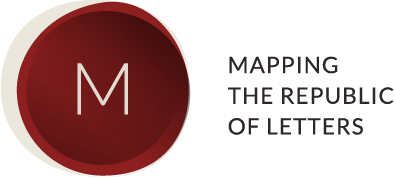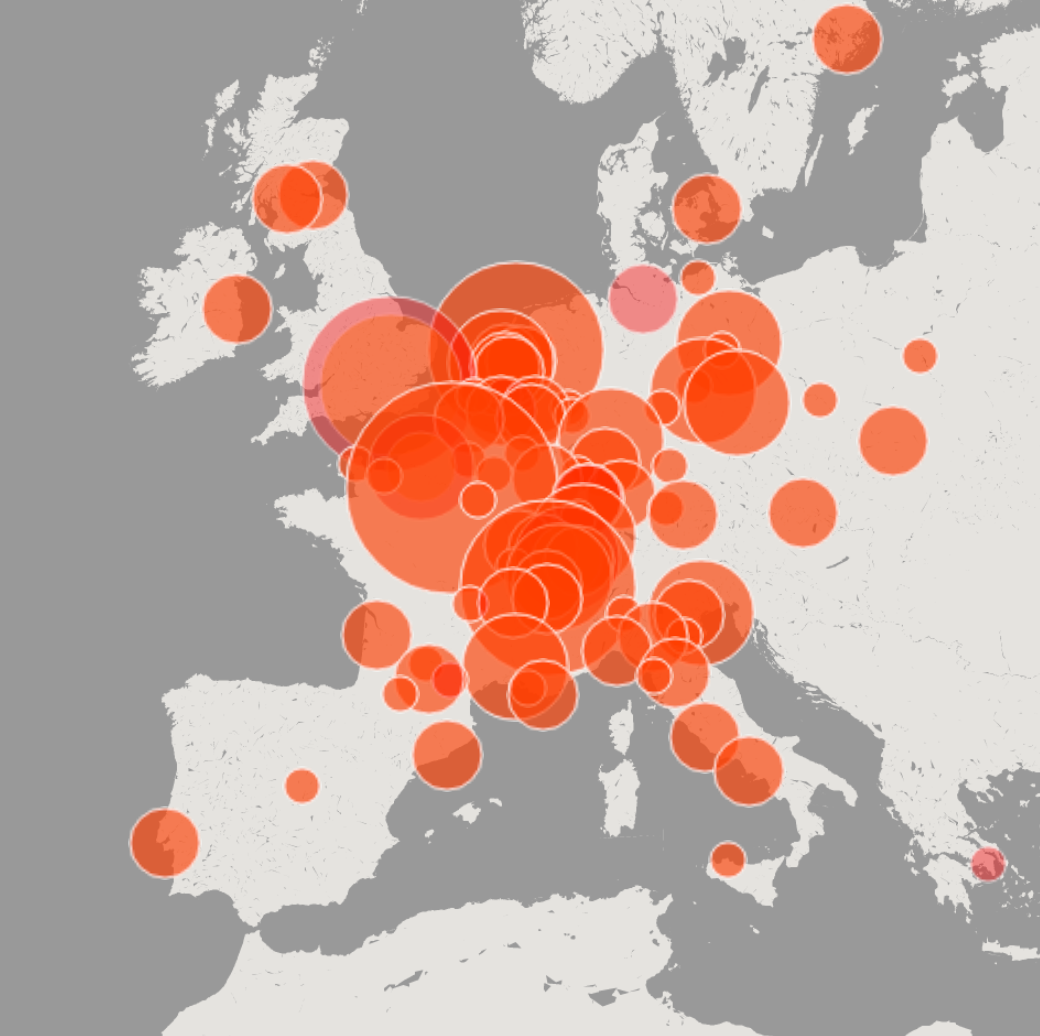
- Lead: Irène Passeron
- Start Date:
- Team: Marie-Laure Massot
About the project
Group D'Alembert (CNRS, France) brings together forty researchers around the annotated and critical edition of the Complete Works of D'Alembert, in sixty volumes of scientific literature, encyclopaedias, academic, literary and historical. Six volumes have been published by CNRS Editions since 2002. To do this, many search tools (inventories, bibliographies, chronologies, research on contemporary scholars) have been jointly developed and compiled in part on the site http://dalembert.obspm.fr/
One ambition of this collective work is to see, understand and link the many facets of the activity of the co-director of the Encyclopédie. In each volume, the emphasis is placed on the relationship between scientific output of the scientist and the context of this production.
In this sense, the correspondence often plays a role in revealing the intellectual and social networks. It was therefore essential, both for the general annotation of the work that all eighteenth-century scholars, to have a reliable and documented edition of this correspondence to a large extent unknown. With two thousand two hundred letters preserved, correspondence received and sent by D'Alembert has toured Europe of the Enlightenment.
Marie-Laure Massot joined the Mapping the Republic of Letters project last academic year (2011-2012) at Stanford University in order to carry out a series of visualizations of D'Alembert's correspondence, thus initiating the link between the tools developed at Stanford and the D'Alembert project and correspondence database. Beyond the collaboration, it was for her a voyage of discovery into the new challenges and possibilities of Digital Humanities at the interaction between Humanities, Computer science and Design. A report of the collaboration is in redaction process and can be found at [A digital journey into D'Alembert's correspondence]
Exploring the metadata for D'Alembert's correspondence is a great way to travel with one of the greatest french scientist and philosopher of the eighteenth-century through his data to have a better idea of his work and his intellectual network. It is also a great opportunity for us to join our D'Alembert's data to others major actors of the Republic of Letters ones in order to do some significant comparisons of their respectives networks.
Inventaire analytique de la correspondance 1741-1783, Jean le Rond D'Alembert, édition établie par Irène Passeron avec la collaboration de Anne-Marie Chouillet et Jean-Daniel Candaux, CNRS Editions, Paris 2009.
Visualizing Jean le Rond D'Alembert's Network
We are exploring everything from D'Alembert's correspondents, to the shape of his network through the journeys of his letters, to the letters themselves. We dive deeper and deeper into his personal life and his intellectual, scientific and social interests in order to draw a better picture of his character, his network and his place in the Republic of Letters. We can also do some comparisons with Voltaire and Franklin networks to figure out their extents and their cosmopolitanism.

Letters sent and received by D'Alembert from 1741 to 1783
Mapping D'Alembert: measuring D'Alembert's correspondence (extant). Quantitative overview:
A study of the relations between science and philosophy during the Enlightenment as seen through the activities of one of its most prominent spokesmen, Jean le Rond D'Alembert.
Who are D'Alembert's main correspondents? Localisations of D'Alembert's main correspondents: French, european or international network?
Calendars: number of letters written or received by D'Alembert (vs years, month and locations) to figure out if his correspondents' network involved according to his academical carrier.
Study of D'Alembert's correspondents's gender, nationality, occupation and "milieux" to get a more accurate picture of the people D'Alembert is exchanging with in a regulary base (at least 10 letters): a mainly scientific network or a "letter and science" one?
Rather D'Alembert attempted to place him in the scientific, social, and "philosophical" communities of the eighteenth century, to show how one important philosophe lived in all three worlds.
Mapping the Republic of Letters: exploring and comparing the databases of three main figures of the Republic of Letters (Voltaire, Benjamin Franklin and D'Alembert)
Comparisons with Voltaire and Franklin correspondences networks: How does D'Alembert's correspondence network compare to Voltaire and Franklin?
Overlap in correspondents?
Comparative breadth and extent of the networks.
Three different samples of Cosmopolitism?
Mapping a Letter: New Ways of Defining and Understanding a Letter
Can we trace the circulation of new ideas and concepts based on letter topics? Can we caracterize a letter (mentions and localisation of people, books and authors cited, main topics and idea of the letter, interaction between letters, manuscript and translation)?
Irène Passeron (lead of Group D'Alembert, CNRS France, for more informations visit http://dalembert.obspm.fr/) researcher and editor of the D'Alembert's correspondence is very interested by the circulation ot the ideas during the Enlightenment. She proposes to create a new visualization tool "Mapping a letter" to analyse a letter, to give all the relations that it involves.
The Letter from D'Alembert to la marquise Du Deffand, 22th of December 1752 (Localisation of the manuscript: Stanford Libraries, Special Collections Misc. 169) could be a good sample to test if this kind of charting a letter could be useful:

[Letter from D'Alembert to la marquise Du Deffand, 22 décembre 1752], (Mss Misc 169) used with permission, Department of Special Collections and University Archives, Stanford University Libraries, California, USA. Photographie prise par Marie-Laure Massot.
First visualizations with Tableau and Excel
Destinations of the letters sent by D'Alembert and sources of the letters received by D'Alembert (1741-1756): D'Alembert's network is mostly a French one with a European extension (Germany and Russia):

Letters sent by D'Alembert to his three main correspondents: Voltaire (dark blue), Lagrange (cyan), and Frederique II (light blue). D'Alembert's three main correspondents are an intellectual, a ruler, and a scientist:

The above correspondence map can be broken up to examine D'Alembert's correspondence with each person individually:
Letters sent and received by D'Alembert per year, month and colored by locations (1741-1756): this is a good way to see some pattern in the correspondence. For example, by comparing this calendar to D'Alembert's and Voltaire's timelines, we can figure out their travels. From 1750 to 1753 Voltaire was invited by Frederique II in Gemany, so D'Alembert's correspondence was more based on Germany during this period of time. Then, D'Alembert was the host of Frederique II in 1755 in Wesel and went to visit Voltaire in Geneva in 1756:

D'Alembert's correspondence network : a digital journey into D'Alembert's correspondence using the MRofL tools
Ink was designed for the high-level exploration of a single correspondence collection. This particular approach is helpful when investigating the character of the network of one prominent individual like Votaire, Franklin, or D'Alembert. The data behind the visualization is configured such that all the letters --sent and received--for this central figure are accounted for, but calculations involving different dimensions of his correspondence network do not. Ink includes three views: Map, timeline with histogram, and a version of Fineo, a flow diagram.
Ink is a visualization tool based around a single major figure's correspondence. These examples use D'Alemberts correspondence as the basis. All of the letters to/from D'Alembert are considered, but his letters are omitted from calculations of Gender, Nationality, etc.
References
Irène Passeron: "D'Alembert et ses correspondants : Mélanges de littérature, d'histoire et de philosophie", Des "passeurs" entre science, histoire et littérature. Contribution à l'étude de la construction des savoirs (1750-1840),sous la dir. de G. Bertrand et A. Guyot, ELLUG, Grenoble, 2011.
"D'Alembert : construction d'une identité scientifique au XVIIIe siècle", Jahrbuch für Europaische Wissenschaftskultur, Bd.4 (2008), P. 11-34.
"La République des sciences : réseau des correspondances, des académies et des livres scientifiques au 18e siècle", Dix-huitième siècle n° 40, 2008, p. 5-28.
"La correspondance de D'Alembert : un réseau européen ?", D'Alembert, i Lumi, l'Europa, Bollettino di Storia delle scienze matematiche, CLUEB, Bologne, 2008/2.












